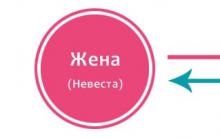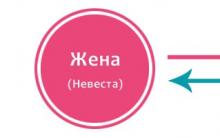The essence of visual management
Definition 1
Visual management is a clear description of the standards, conditions and objectives of the work in the field, which serves to compare each employee with the actual state of affairs and requirements for production efficiency.
With the help of visual management, activities are carried out that are aimed at bringing the product in line with the specified requirements.
In a general sense, visual management is understood as a set of methods and information that support employees in the process of performing their work and provide feedback.
Forms of visual management
- Posting border samples and standards. So, good and bad details are exhibited at the workplace and are accompanied by comments on the reasons for classifying a particular sample as good or bad. Particular attention is paid to details that are borderline cases.
- Stop/Go signal. It can be any form of visual and/or acoustic signal that gives information regarding the state of the process (alarm lamp, siren, etc.)
- The Andon system is a light board or conductor system that allows you to clearly identify the type and location of a problem situation. This system supports the employee when he needs help during the execution of a particular process. Such systems are used by the largest corporations to automatically stop the process when it is impossible to quickly solve the problem.
- Automatic stop in an automated plant that stops the production process in case of emergency. This method helps to prevent the production of defective products, while the production cycle is resumed only after the analysis and elimination of the problem.
Remark 1
Posted information should relate only to specific places or processes, it makes no sense to post information that is of a general nature and affects the operation of the enterprise as a whole.
At the same time, only posting information is not enough, each employee should understand that this information is part of his official duties which will improve your workflow.
Visual management is a key force for improvement and ensures that the terms of lean manufacturing are legible, understandable, and adhered to at all times. The primary cause of inefficient spending is the lack of information due to the fact that the staff simply lacks knowledge about how to improve the efficiency of their workplaces. With the help of visual management, productivity, quality, customer satisfaction, safety, etc. can be significantly improved.
Visual management tools
Among the main tools that can be used in visual management are the following:
- incident video,
- development of visual standards,
- visualization of the analysis of the problem (using the Pareto chart, fishbone, etc.),
- visualization of basic indicators of jobs,
- cross learning scheme,
- visualization of performance indicators of the entire enterprise.
Stages of implementation of visual management
The implementation of visual management involves the sequential passage of a number of stages:
- The first stage is devoted to the organization of jobs.
- Then, during the second stage, the key information that is located at the workplace is visualized: information regarding safety, quality, sequence of operations and rules for operating the equipment.
- As part of the third stage, the performance indicators and results of various processes are visualized.
- At the fourth stage, based on this visualized information, decisions are made in terms of visual management.
Essence and meaning of visual management
The use of visual management in a lean manufacturing system makes it possible to achieve the following 2 important goals:
- continuously control the situation in the workplace, observe what is happening and make problems visible, visible
- make improvement objectives much clearer (e.g. set visual targets while making both targets and current results visible)
In the context of a lean manufacturing system, visual management can be done in the following 3 ways:
- using indicators (key indicators)
- using photo
- using markup.
Indicators in visual control
Remark 1
They are a table or graph that illustrates the set and actual values of indicators (such as, in particular: the number of errors, output, etc.). Key indicators (or indicators) are usually posted on information boards, usually located at each of the sites.
At the very beginning of the shift, the manager can gather all the employees for a few minutes in order to draw their attention to the indicators (results) achieved for the last shift for each of the employees. At the same time, emphasis is placed on the reasons for the success of those who have demonstrated best results. Be sure to also find out the reasons for the failures of employees who showed low results (or rather, results that are lower than expected). Recommendations are certainly given on the use of best practices, as well as on following existing standards. At the end of the shift, a few minutes are given to bring the workplace in order. During this time, the manager on the information board notes the results achieved during the shift.
Photos, markup
A fairly simple solution for efficient visualization is a photo workplace, shelving, etc. So, for example, if folders are standardized in an office cabinet (and, at the same time, there is a photo of the “ideal option”), then the absence of any of the folders will immediately be noticeable. The presence of a strip on each folder makes it possible to place them in the necessary and optimal order.
markup designed to see how they should move material flows where the equipment should be located, etc. Clearly marked and delimited places (for example, for trolleys or boxes in a warehouse) make it possible not to spend time constantly searching for them.
In many companies, colored tape is used to classify already packaged goods and for subsequent shipment to different points (its use in the production process can also be safely classified as “visual management”).
Information Table
When placing information on the board, you should try to avoid unnecessary information. This is not always an easy task, because in most cases the information is quite diverse), but still, you should try to display only the one that is most needed in this area, for example:
- performance indicators (results of work for a certain period, in quantitative terms), which serve as the basis for the periodic meeting of employees
- performance indicators (quality problems, actual versus planned output, etc.; this kind of information basically serves as the basis for the daily “five minutes”
- general information (announcements, orders, etc.).
Remark 2
You should always try to weed out unnecessary and irrelevant information, and also not to overload it with an abundance of indicators. The information itself should be placed in the most easily accessible places and be understandable without unnecessary explanations and comments.
It was confirmed in 2011 that it is easier for the brain to process pictures than text, and that it is easier for people to communicate in a visual way than only in text (for example, through reports).
Peculiarities perception individual, but the average person perceives 83% seen and 11% heard information. No more than 6% is allocated to organoleptic receptors in total. A slightly different picture emerges in the process memorization information: on auditory and visual individually, a person remembers 20% and 30%, respectively, and when these two methods are combined, the level of memorization increases to 50 percent.
When we look at pictures, our brain can process multiple elements at the same time, and this allows us to achieve speeds 60,000 times faster than normal text reading. Therefore, visualization is one of the powerful and proven methods in lean manufacturing.
The Role of Visualization in Lean Manufacturing
Visualization can be viewed in two ways:
- as a method of presenting information in the form of an optical image (drawings, diagrams, graphs, block diagrams, maps, tables, etc.),
- like placing all the tools, assemblies, parts, information about the production process so that they are visible at a glance.
Key benefits include:
visual planning
A separate place in lean-visualization is occupied by visual planning (VP).
Companies implement VP because:
One clear example of the use of VP is Toyota, which has Obeya- from Japanese "big room". In the company, it has become a project management tool to improve efficiency and meet timing in production.
Verdict
When the general manager of Toyota's division North America asked why the company hadn't written a single book about their processes, he thought about it, and after a few minutes he replied:
This is because such a book would consist of one page, on which would be written: "Keep it simple, make all processes visible and trust people to do the right thing."
Visual management is about that. Its goal is to make the workflow clearer for all its participants. With the help of visualization, you can get the maximum information in a minimum of time.
Why use Visual Management?
Visual management is then used to convey important information. It just so happened that you and I perceive visual images best of all, therefore the management is visual, and not auditory, tactile or olfactory.
All the road signs and traffic lights, the colorful photos of smoker's lungs on cigarette packs that replaced the long-used “Ministry of Health warns ...” and even the badges on the toilet doors send a direct signal to your brain. The complete opposite of how information comes when listening to a lecture or reading a manual. Also, think about on the floor and walls, the signs “do not climb, you will kill” and the evacuation plan. These are all examples of visual management.
However, do not forget about the pitfalls of visual warnings and messages, in the event of a collision with which a person may incorrectly interpret their content. I'm willing to bet that this happens when visual management is "used" for other purposes. For example, to make it beautiful or, to be honest, to introduce another principle of lean manufacturing.
In this note, you will learn about the 5 most common visual management mistakes.
Visualization is imperceptible
The visual signal works well, but only on one condition: it must be noticeable. You cannot hear the visual cue, feel its roughness, taste it, etc. You need to see to get a signal. Very small or faded visualization, text, warning in small print, etc. occurs so often that it unconditionally occupies the first position in the hit parade of visual management errors. I advise you to include sets of visual signals in the same category:

55 signs-signals, even if they are all large and bright, do not reach your brain. And no matter how scientists admire the capabilities of the human body, one should accept the fact that the width of the “eye-brain” channel has its limitations.
Visualization not available

Somewhat less often than the previous paragraph, there is a beautiful and noticeable visualization, which is stuffed into a corner, under the ceiling, or, what’s good, generally hidden from the user. If you've ever seen a double-sided bulletin board carefully placed, hung, or leaned against a wall, this is Visual Management Mistake #2.
Visualization is incomprehensible

- What does this mean? the worker asks.
- It means that you should not put the part with a sharp edge down, - the foreman answers and adds: - Now you will know?
- Certainly! Everything is clearly shown here.
Familiar situation? Did you fall into one yourself?
Of course, for spies and lovers of everything secret, secret signs and incomprehensible symbols are of interest. For visual management, understandable and unambiguously interpreted symbols are necessary. Although, about the interpretation of our next paragraph ...
Visualization can be interpreted in two ways

By creating, or it would be more correct to say, allowing a visualization that can be interpreted in two ways or contradicts itself, you leave the user alone with his decision. Imagination immediately gains free will, and the sphere of authority automatically increases.
This item was included in our hit parade of visual management mistakes for the reason that it has 3 detrimental effects at once:
- does not deliver necessary information;
- calls into question the fulfillment of correct prescriptions;
- gratuitously consumes the resources that were thrown into its creation.
Visualization is absurd or contains clearly false data

Such visualization causes a smile and, of course, is not taken seriously. Often such warnings are ignored or forgotten as soon as they are out of sight. But worst of all, such signals discredit the entire visual management system. You are simply teaching your employees not to respond to visual messages.
All illustrations for this article were selected on the site epicfail.com - a storehouse of errors, not only visual and not only management.
"Production is the basis of the economy" - What is specialization. Characteristic features of a market economy. What are historical conditions turning a product into a commodity. What is the role of production in the economy. Goods and services. The operation of the market mechanism for regulating the economy. The main source of economic benefits. factors of production.
"Lean manufacturing system" - The desire to reduce inventory. Lean manufacturing tools. The starting point of lean manufacturing. Instruments of ideology continuous improvement. Kaizen. Quality system. Albert Einstein. Sorting. Excellent quality. One by one. Business optimization process. Conditions. visual control.
"Value Stream" - Product Family. Process data. Frequency of deliveries of product and raw materials. Average monthly order. Delivery details. Calculation of order lead time. Who is responsible for the value stream. Value stream (VSM). Communication. Creating a Current State Map. Process steps.
"Location of production" - Labor costs. The presence of objective laws. W. Launhardt. Theoretical basis course. Alfred Weber Triangle. Economics of the regions of the world. Industrial enterprises. Raw factor. Types of raw materials according to Weber. Von Thunen's model. Placement theory. Location of production.
"Production at the enterprise" - Production flows. Interoperative waiting time. Methods of organizing production. Operations. Subdivisions. Principles of organization of the production process. in-line production. Break times. Production structure. Phase. Manufacturing process. Shop. Production cycle. Production types.
"Production program" - OKP functions. Production volume target. The concept and indicators of the production program. Production program indicators. Types of production capacity. Stages of drawing up the production program of the enterprise. Development of the production program. Productive capacity. Manufacturing method and type of production.
In total there are 14 presentations in the topic











How to make a bird costume with your own hands Carnival bird costume
Scenario for 25 years girl cool houses
Examples of serious nominations for rewarding employees
The script for the anniversary of the girl (young woman) "A star named ...
Comic nominations for a corporate party